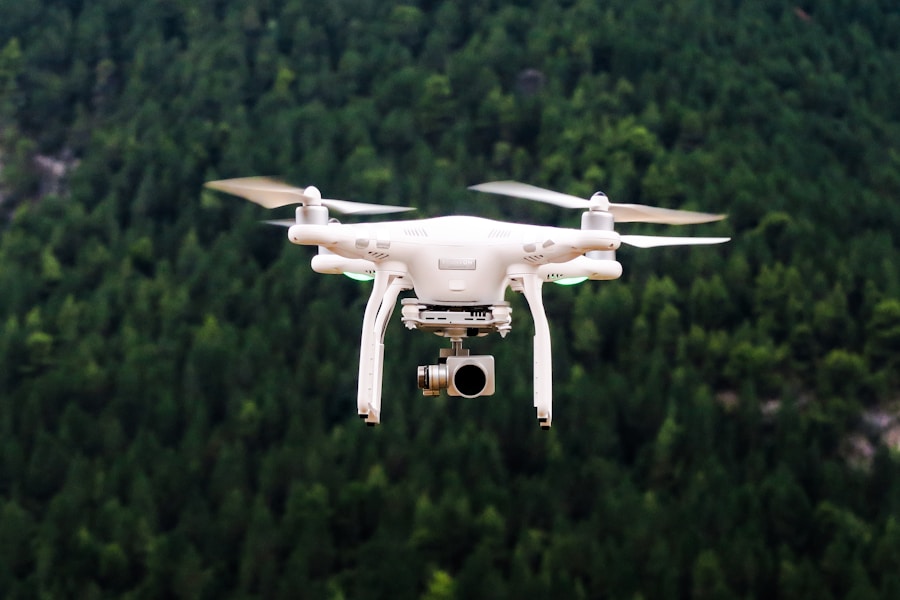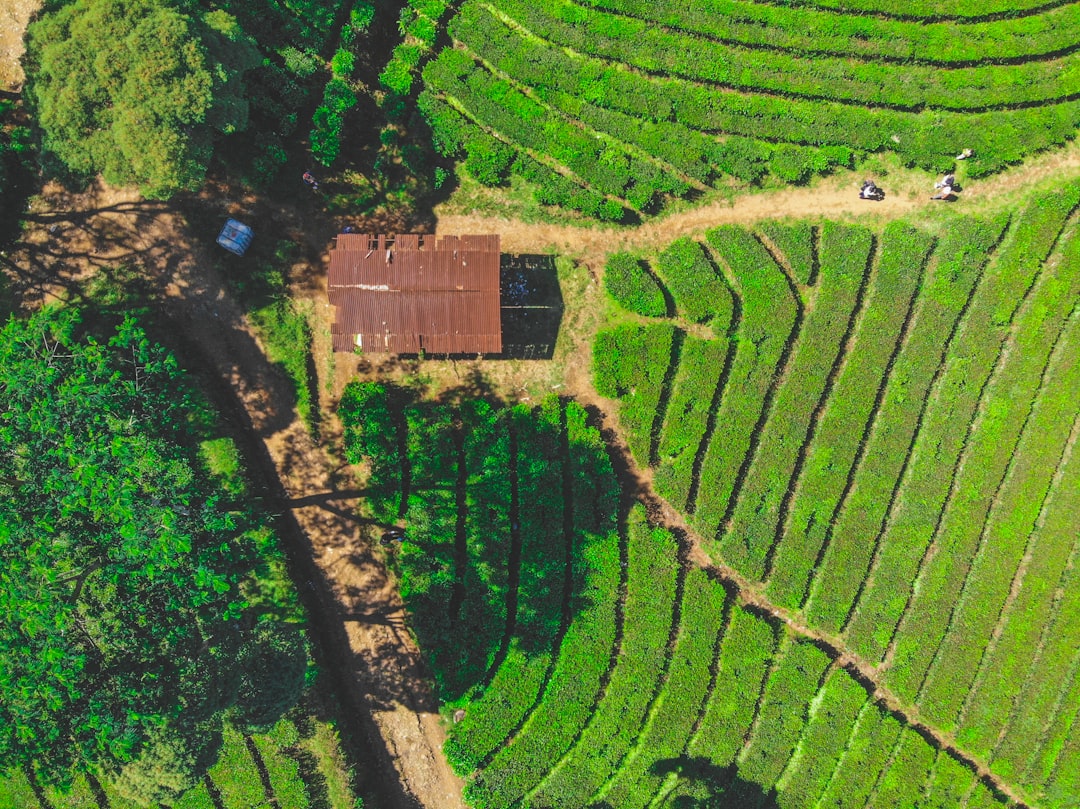Drones, also known as unmanned aerial vehicles (UAVs), have come a long way since their inception in the military sector. Over the years, the use of drones has expanded to various industries, including agriculture. The evolution of drones in agriculture can be traced back to the early 2000s when farmers and researchers began exploring the potential of using drones for crop monitoring and management.
Initially, drones were primarily used for aerial imaging to assess crop health and identify areas of concern. However, as technology advanced, so did the capabilities of drones in agriculture. Today, drones are equipped with advanced sensors and imaging technology that allow for precise and detailed data collection, making them an invaluable tool for modern farming practices.
The use of drones in agriculture has revolutionized the way farmers approach crop management and monitoring. With the ability to capture high-resolution images and data, drones have become an essential tool for precision agriculture. This technology has enabled farmers to make informed decisions about crop health, irrigation, and pest management, ultimately leading to improved efficiency and yield.
As the demand for sustainable and efficient farming practices continues to grow, the role of drones in agriculture is expected to expand even further in the coming years.
Key Takeaways
- Drones play a crucial role in modern agriculture by revolutionizing farming practices and enhancing efficiency and yield.
- The evolution of drones in agriculture has led to the development of precision agriculture, which allows for more accurate and targeted farming practices.
- Using drones in farming offers advantages such as cost savings, time efficiency, and improved crop monitoring.
- Drones contribute to environmental benefits in agriculture by reducing the need for chemical inputs and minimizing environmental impact.
- While drone technology in farming has its challenges and limitations, the future of drones in agriculture holds promising innovations and opportunities for further advancement.
Advantages of Using Drones in Farming
The advantages of using drones in farming are numerous and far-reaching. One of the most significant benefits of drone technology in agriculture is its ability to provide real-time data and insights into crop health and field conditions. Drones equipped with high-resolution cameras and sensors can capture detailed images and data that are essential for monitoring crop growth, identifying areas of concern, and making informed decisions about irrigation and fertilization.
This level of precision and accuracy is unmatched by traditional methods of crop monitoring, making drones an invaluable tool for modern farming practices. In addition to providing detailed data and insights, drones also offer significant cost savings for farmers. By using drones for crop monitoring and management, farmers can reduce the need for manual labor and equipment, ultimately saving time and resources.
Furthermore, the use of drones can lead to more efficient use of inputs such as water and fertilizers, resulting in cost savings and environmental benefits. Overall, the advantages of using drones in farming are clear, as they offer a more sustainable and efficient approach to crop management that can lead to improved yield and profitability for farmers.
Precision Agriculture: How Drones are Revolutionizing Farming Practices
Precision agriculture, also known as precision farming, is a farming management concept that utilizes technology to optimize crop production while minimizing waste and environmental impact. Drones have played a significant role in revolutionizing farming practices by enabling precision agriculture on a scale that was previously unattainable. With the ability to capture detailed images and data from above, drones provide farmers with valuable insights into crop health, soil conditions, and field variability.
This information allows farmers to make informed decisions about planting, irrigation, fertilization, and pest management, ultimately leading to more efficient and sustainable farming practices. The use of drones in precision agriculture has also led to the development of advanced analytics and decision support tools that further enhance farming practices. By integrating drone data with other sources of information such as weather forecasts and soil analysis, farmers can gain a comprehensive understanding of their fields and make data-driven decisions that optimize crop production.
This level of precision and efficiency is essential for meeting the growing demand for food while minimizing environmental impact. As the technology continues to advance, the role of drones in precision agriculture is expected to expand even further, leading to more sustainable and productive farming practices.
Drones and Crop Monitoring: Enhancing Efficiency and Yield
| Metrics | Value |
|---|---|
| Increased Crop Yield | 10-25% |
| Reduction in Water Usage | 30% |
| Time Saved in Crop Monitoring | Up to 90% |
| Reduction in Pesticide Usage | Up to 30% |
Crop monitoring is a critical aspect of modern farming practices, as it allows farmers to assess crop health, identify areas of concern, and make informed decisions about management practices. Drones have revolutionized crop monitoring by providing farmers with a comprehensive view of their fields from above. Equipped with high-resolution cameras and sensors, drones can capture detailed images and data that are essential for assessing crop health, identifying pest infestations, and monitoring field variability.
This level of detail and precision enables farmers to take proactive measures to address issues before they impact yield, ultimately leading to improved efficiency and profitability. In addition to providing detailed insights into crop health, drones also offer a more efficient approach to crop monitoring compared to traditional methods. With the ability to cover large areas in a short amount of time, drones can provide farmers with real-time data that is essential for making timely decisions about irrigation, fertilization, and pest management.
This level of efficiency is essential for meeting the demands of modern agriculture while minimizing resource use and environmental impact. Overall, the use of drones for crop monitoring has proven to be a game-changer for modern farming practices, as it enables farmers to make informed decisions that optimize yield and sustainability.
Environmental Benefits of Drones in Agriculture
The use of drones in agriculture offers significant environmental benefits that are essential for meeting the demands of sustainable farming practices. One of the most significant environmental benefits of using drones is their ability to minimize the use of inputs such as water and fertilizers. By providing farmers with detailed insights into crop health and field conditions, drones enable more precise application of inputs, ultimately reducing waste and minimizing environmental impact.
This level of precision is essential for meeting the growing demand for food while minimizing resource use and environmental degradation. In addition to minimizing input use, drones also offer environmental benefits by reducing the need for manual labor and equipment in crop monitoring and management. With the ability to cover large areas in a short amount of time, drones provide a more efficient approach to crop monitoring that minimizes the use of fossil fuels and reduces carbon emissions.
Furthermore, by enabling precision agriculture practices that optimize crop production while minimizing waste, drones contribute to more sustainable farming practices that are essential for meeting the demands of a growing population. Overall, the environmental benefits of using drones in agriculture are clear, as they offer a more sustainable approach to crop management that minimizes environmental impact while maximizing productivity.
Challenges and Limitations of Drone Technology in Farming
While the use of drones in agriculture offers numerous benefits, there are also challenges and limitations that must be addressed for widespread adoption. One of the most significant challenges is the cost associated with acquiring and operating drone technology. While the cost of drones has decreased in recent years, they still represent a significant investment for many farmers, particularly small-scale operations.
Furthermore, the cost of training personnel to operate drones and analyze data can also be a barrier for adoption. As a result, there is a need for more affordable drone technology and training programs that make this technology accessible to all farmers. Another challenge associated with drone technology in farming is regulatory compliance.
In many countries, there are strict regulations governing the use of drones for commercial purposes, including agriculture. These regulations often require operators to obtain licenses and adhere to specific operating guidelines, which can be complex and time-consuming. As a result, there is a need for more streamlined regulatory processes that enable farmers to take full advantage of drone technology without unnecessary barriers.
The Future of Drones in Agriculture: Innovations and Opportunities
The future of drones in agriculture is filled with innovations and opportunities that have the potential to revolutionize farming practices even further. One area of innovation is the development of advanced sensors and imaging technology that further enhance the capabilities of drones for crop monitoring and management. With the ability to capture even more detailed images and data, future generations of drones will provide farmers with unprecedented insights into their fields that enable more precise decision-making.
Another area of opportunity for drone technology in agriculture is the integration with other advanced technologies such as artificial intelligence (AI) and machine learning. By combining drone data with AI algorithms, farmers can gain a deeper understanding of their fields and receive real-time insights that enable proactive decision-making. This level of automation and intelligence has the potential to revolutionize farming practices by optimizing crop production while minimizing resource use.
Overall, the future of drones in agriculture is bright, as innovations continue to expand the capabilities of this technology while creating new opportunities for sustainable farming practices. As technology continues to advance, it is clear that drones will play an increasingly important role in modern agriculture by providing farmers with valuable insights into their fields that enable more efficient and sustainable crop management practices.








